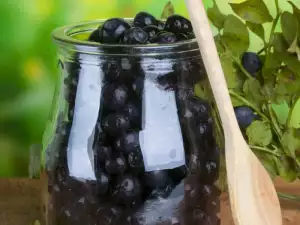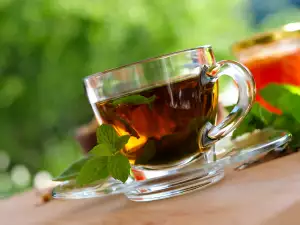Storing fruits is especially important for preserving their quality. The best type of storage, which can preserve the vitamins and minerals maximally, is by refrigeration in a plastic bag. Do not wash them beforehand but right before consumption.
This is especially true for soft fruits, such as strawberries. Place them unwashed in a glass bowl in the refrigerator and cover with foil with holes in it, so they do not smother and rot. Fruits retain their vitamins longer when frozen in the freezer. Their shelf life when frozen is no more than 10 months.
Fruits can be eaten throughout the winter months as well, when made into jam, juice etc. But there are other storage methods as well:
Cornels. This is a fruit often used for making jams, dried canned fruits, compotes, nonalcoholic drinks, as well as wine. They are believed to be especially beneficial against all sorts of colds and stomach ailments. They can also be stored dried. For storage, the fruits from the wild shrubs as well as the cultivated crops are used.
When drying cornels in the oven, the initial temperature must be around 120°F (50 °C). It must gradually be increased to 160°F (70 °C). If the weather is appropriate, it is best to dry them in a ventilated and shady place.

Sloes. The ripe fruit has a high content of glucose, saccharose, pectin and cellulose, as well as biologically active substances. The most adequate storage of sloes is in fresh condition. The fruit is picked when fully ripe but they are still hard and covered with a bluish coating.
Clean them of impurities and the softened fruits. Store them arranged in a thin layer in a small crate in a cool and ventilated area. They can be stored this way for up to a month. During that time, fermentation processes take place, causing them to soften, become sweeter and decreasing their tartness.
Almonds. They can be stored for extended periods due to their low content of water. They do not require anything specifically.
Blueberries. They have rich healing and nutritional properties, and their juice stimulates eyesight. In order to be stored prolongably, they must be prevented from drying up. For this purpose, pour water over them and once the weather turns cold, remove the water and leave the blueberries in the cold to freeze. In this way, they keep their taste and nutritional properties intact.

Blackcurrant. It is characteristic for it to retain its vitamins even after prolonged storage. Store it fresh. Place the picked fruits in small crates (5.5 lb (2.5 kg) per crate) in a cool, ventilated area at temperatures of 50°F (10 °C).
They can stay like this for 2 - 3 weeks. For longer periods, blackcurrant can be placed in the refrigerator at a temperature of 30°F (0 °C). If storing them that way, place in jars, which must be aired out every 4 - 5 days for 15 - 20 min.
Chestnuts. Since they are not eaten raw, chestnuts must first be boiled or roasted. That way, some of the starch is hydrolyzed into sugars and they attain a sweet flavor and taste. These fruits can be used to make purees, pizza toppings, garnishes for broiled meat, as well as cakes.
Chestnuts are stored fresh. Before storage, they must be dried in a sunny and ventilated area. Then put them in large boxes or cases. Place layers of dried chestnut leaves between them.
The best storage temperature is about 40°F (5 °C). It is not necessary to unshell them. If you plan to store them unshelled, mix them with dry, sandy soil and keep in containers in a cool and dry place. This way they will remain untouched by time until spring.
Generally, most fruits can be stored fresh, when placed in a cool area. With time however, they inevitably begin to rot, depending on their sort. At that point, they are unfit for consumption and must be thrown out.






















